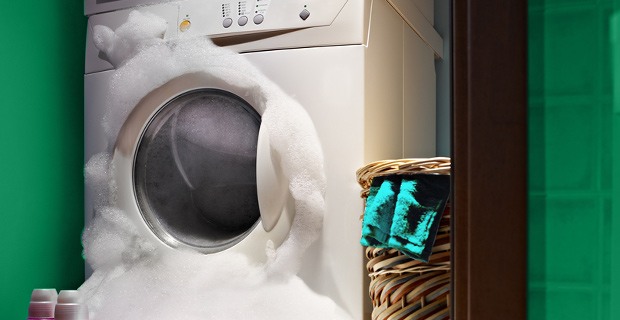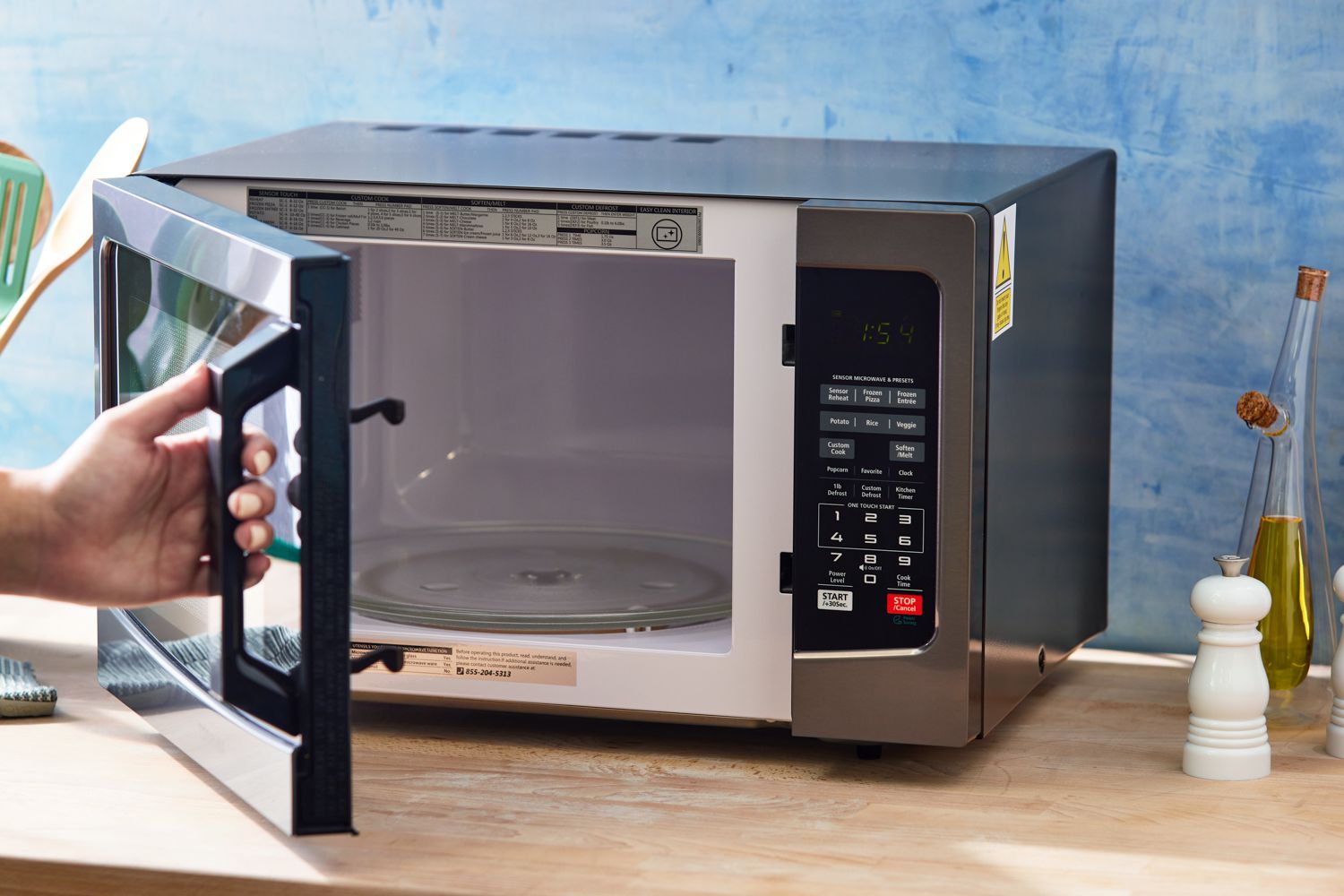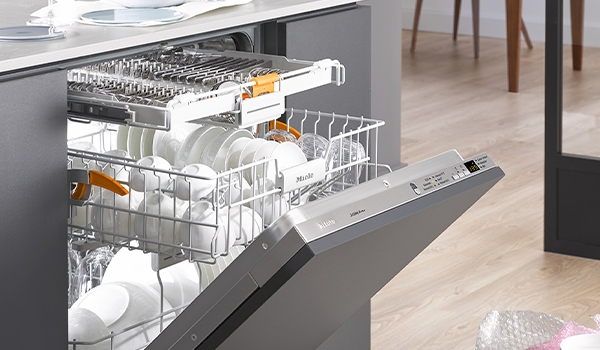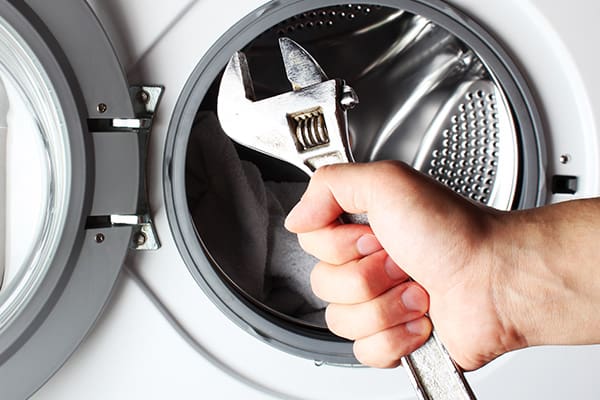Why Are Suds Pouring Out of Your Washing Machine?
Experiencing suds pouring out of your washing machine can be frustrating and messy, often causing concern about potential damage. This issue usually arises due to excess detergent, the wrong type of detergent, or other washing machine malfunctions. High-efficiency (HE) washers, in particular, require low-sudsing detergent, and even a small amount of excess can lead to an overflow. Additionally, factors like water softener use or accidental overuse of detergent can increase the likelihood of excessive suds. Understanding the causes and knowing the steps to resolve and prevent this problem can help keep your washing machine running smoothly and your laundry area mess-free.
Why Are Suds Pouring Out of Your Washing Machine?
Excessive suds spilling out of a washing machine is a common problem, especially in high-efficiency (HE) models designed to use minimal water and detergent. This overflow typically occurs when too much detergent is added, or when a non-HE detergent is used in an HE washer. These detergents produce more suds than the machine can handle, resulting in bubbles escaping through the washer door or detergent drawer.
Another factor contributing to excessive suds is the use of water softeners. Softened water enhances the sudsing effect of detergent, which means that even a standard amount can create an overwhelming amount of bubbles. Additionally, failing to regularly clean the washing machine drum or detergent dispenser can cause detergent residue buildup, intensifying suds production in future washes.
Mechanical issues can also lead to excessive suds. If the machine’s sensors or drainage system are not functioning properly, it may not effectively rinse out detergent, allowing suds to accumulate. While the sight of suds pouring out can be alarming, understanding these common causes can help you quickly identify and resolve the issue. Following best practices for detergent usage and routine maintenance can prevent future overflows and keep your machine running smoothly.
Common Causes of Excessive Suds in Washing Machines
Excessive suds in washing machines can result from various causes, each of which plays a distinct role in how effectively the machine operates and maintains cleanliness. Here are the main reasons behind suds overflow and why understanding them is crucial for avoiding mess and machine malfunctions.
- Using the Wrong Detergent
- Overusing Detergent
- Water Softener Use
- Faulty Washing Machine Settings or Malfunctions
Using the Wrong Detergent. High-efficiency (HE) washing machines are specifically designed to work with HE detergents, which are formulated to produce fewer suds. HE detergents dissolve quickly and rinse out effectively, allowing the machine to use minimal water while still cleaning thoroughly. If a regular detergent is used in an HE machine, it can produce far more suds than the machine can handle, often leading to an overflow. The excessive suds can impair the machine’s ability to rinse the detergent completely, leaving residues on clothes and within the machine, which can lead to buildup over time. Using only HE detergent for HE machines is essential for optimal performance and to prevent sudsy spills.
Overusing Detergent. Even when using HE detergent, adding too much can result in an overload of suds. Many people assume that more detergent equals cleaner clothes, but this is a misconception. Excess detergent can leave a sticky residue on clothes and the machine, as it may not rinse out fully. The extra detergent increases suds production, filling the drum with bubbles that spill over and, in some cases, damage internal components. Following the detergent’s recommended amounts based on load size and soil level can prevent these issues and keep your machine functioning properly.
Water Softener Use. If you use a water softener, you may notice an increase in suds when washing. Softened water requires less detergent to achieve effective cleaning, as it naturally enhances the detergent’s cleaning power. This means that the same amount of detergent you’d use with hard water can create an excessive amount of suds when used with softened water. To avoid this, reduce the amount of detergent when using softened water, and experiment to find the right amount that provides effective cleaning without causing an overflow of bubbles.
Faulty Washing Machine Settings or Malfunctions. Sometimes, excessive suds aren’t caused by user error but by mechanical issues or incorrect settings within the machine. For instance, the rinse cycle or water temperature may not be properly calibrated, affecting how well detergent rinses out. Additionally, a faulty water inlet valve or drainage issue can prevent the machine from completely removing soap and suds during the rinse cycle, leading to an accumulation over time. In these cases, resetting the machine or calling a professional to inspect and repair any faulty parts may be necessary.
Understanding these causes helps not only in resolving current suds overflow issues but also in preventing them from recurring. Correct detergent use, awareness of water conditions, and attention to machine maintenance can all help you avoid the mess and inconvenience of excessive suds in the future.
Step-by-Step Solution: How to Fix Excessive Suds Issue?
If you encounter excessive suds pouring out of your washing machine, follow these step-by-step instructions to quickly resolve the issue and prevent it from happening again. Properly addressing this issue can help avoid any potential damage to your machine and ensure it continues to perform optimally.
- Stop the Cycle and Drain the Machine
- Run a Rinse Cycle
- Clean the Washer Drum and Detergent Dispenser
- Reduce Detergent Usage in Future Washes
Stop the Cycle and Drain the Machine. The first step when you see excessive suds is to immediately stop the washing cycle. Most washing machines have a "Pause" or "Stop" button you can press to halt the current wash. By stopping the cycle, you prevent the situation from worsening and giving more time for suds to accumulate. After stopping the cycle, access the drain feature on your machine to release the water and suds buildup. Some machines have a “Drain & Spin” option that can help drain out excess water and suds without continuing to wash. If necessary, place towels around the machine to absorb any suds that might escape during the process.
Run a Rinse Cycle. Once the machine is drained, initiate a rinse cycle to help clear out any remaining suds. The rinse cycle will use clean water to wash away the soap and bubbles left inside. For optimal results, you may want to run multiple rinse cycles if suds are still present after the first rinse. Each cycle will dilute and remove the excess detergent, gradually clearing the drum of any lingering bubbles. If your machine has a specific "Extra Rinse" option, select that to increase the chances of thoroughly rinsing out all soap residue. A thorough rinse cycle is crucial because residual suds can build up over time, eventually leading to more serious issues like clogged drains or detergent buildup.
Clean the Washer Drum and Detergent Dispenser. After rinsing, it’s a good idea to clean both the washer drum and the detergent dispenser to remove any detergent residue that may be causing the suds problem. Open the detergent drawer and wipe it down with a damp cloth to eliminate any soap buildup. In the drum, use a cloth or sponge to wipe around the interior, ensuring there are no leftover suds or film from previous washes. Some machines have a “Drum Clean” setting that can be used in conjunction with a small amount of vinegar or a washer cleaner tablet to effectively remove any detergent buildup. Cleaning these areas regularly will reduce the likelihood of future suds issues, as any leftover detergent can interact with new detergent, producing excessive bubbles.
Reduce Detergent Usage in Future Washes. To prevent a repeat of the suds overflow, it’s essential to use the correct amount of detergent in future washes. Check your detergent packaging for recommendations on the amount needed for different load sizes. For high-efficiency (HE) machines, use only HE detergent, as it’s formulated to produce fewer suds. Start with a small amount of detergent, especially if you have a water softener, as softened water amplifies the sudsing effect. Generally, for HE machines, one to two tablespoons of detergent are sufficient for regular loads, while larger or heavily soiled loads may require slightly more. Avoid “overloading” with detergent under the belief that more soap equals cleaner clothes; in reality, excess detergent often leads to residue and buildup.
Preventing Suds from Overflowing in the Future
Preventing excessive suds from overflowing in your washing machine is all about using the right detergent, measuring it carefully, and maintaining your washer properly. Following these practices can help you avoid messes, protect your machine, and keep your laundry looking and smelling fresh.
- Use the Correct Detergent
- Measure Detergent Carefully
- Regular Washer Maintenance
Use the Correct Detergent. High-Efficiency (HE) washing machines are specifically designed to work with HE detergents, which produce fewer suds and rinse out more efficiently. HE detergents prevent excessive foaming and ensure that the machine operates smoothly without causing buildup or clogging. Using regular detergent in an HE machine can lead to excessive suds and may result in a cycle overflow, potentially causing water damage or mechanical issues over time. Always look for the “HE” label on detergent packaging to ensure compatibility with your machine. This is especially important for front-loading washers, which use less water and are more prone to sudsing issues when the wrong detergent is used.
Measure Detergent Carefully. Proper detergent measurement is key to avoiding excessive suds. Many people add more detergent than necessary, assuming it will make their clothes cleaner. In reality, using too much detergent often leads to residue on clothes and excess suds in the machine. The amount of detergent needed typically varies based on load size, soil level, and water type. For example, if you have soft water, you can use even less detergent since soft water enhances sudsing. In general, for an HE machine, one to two tablespoons of detergent is often enough for regular loads. Larger loads may require a bit more, but it’s best to start with a conservative amount and increase only if absolutely necessary. Most detergent bottles provide a cap with measuring lines, so use these guidelines to avoid overuse.
Regular Washer Maintenance. Keeping your washing machine clean can also help prevent suds overflow. Detergent residue can build up in both the drum and detergent drawer over time, creating an environment where excess suds are more likely. Regular maintenance involves cleaning the drum and detergent dispenser every month or so. To clean the drum, you can run an empty cycle with a cup of white vinegar or a washing machine cleaner to dissolve any detergent buildup. For the detergent drawer, remove it if possible, and rinse it under warm water to eliminate any residue. If it’s not removable, use a cloth or small brush to clean inside. Periodic cleaning will help prevent detergent buildup, ensuring that your machine operates smoothly and reducing the risk of future overflow.
When to Call a Professional?
While minor suds overflow issues can often be handled with simple adjustments, certain signs indicate it may be time to call a professional for assistance. If you notice persistent suds overflow even after adjusting detergent usage, using the correct HE detergent, and performing regular cleaning, this could signal a deeper mechanical or drainage issue. Blockages in the drainage system, a malfunctioning water inlet valve, or faulty sensors can cause excess suds and other washing problems that require professional expertise.
Additionally, if you experience frequent leaks around the washer door, pooling water around the base of the machine, or an unusually long cycle time, it may point to issues within the pump, drainage, or electronic controls. Trying to fix these without the right tools or knowledge can sometimes worsen the issue and increase repair costs. Calling a qualified technician will ensure a thorough diagnosis and safe repair, preventing further damage and restoring the washer’s functionality. Professionals can also offer guidance on optimal detergent use and other maintenance tips specific to your model, helping to keep your washing machine in good working order.







